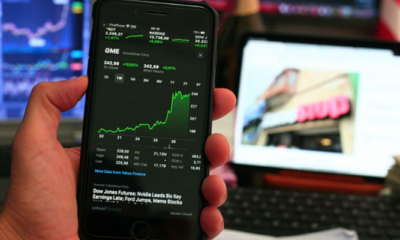Trading News
Day Trader 101 – Day Trading Strategies for the Pros

Day Trading Forex currency is a fast-paced and volatile investment practice wherein an investor seeks to profit from changes in the price of currencies over a short period. Day trading is also called “Forex scalping” by brokers. In this practice, an investor seeking to make quick profits builds several free positions during the course of a single trading day. Day trading is not recommended for investors who are new to the foreign exchange markets, and for whom the profit and loss risk cannot be reduced to a minimum.
A day trader is usually not supervised by any regulatory authority or federal agency and thus operates without any restrictions or requirements. In some respects, it is similar to stock market investing in that the trader must develop a specialized system to detect and identify profitable opportunities, and then act on those opportunities quickly and efficiently. The primary difference between stock market investing and day trading is that in the stock market, if an investor’s position grows in value, then the trader has to sell short that position to realize the profit. If done incorrectly, the trader may end up overpaying for his or her position.
Some professional traders utilize technical analysis to determine the price movements in the markets and to identify possible entry and exit points. The technique of technical analysis requires the use of indicators, charts, and graphs. The purpose of technical analysis is to provide an investor with a reliable indication of where the market will go next so that the day trader can sell his or her position. However, while some day traders rely primarily on technical analysis to signal when to buy or sell, others use more indirect techniques, such as determining if a particular currency looks promising.
Day traders also rely on less direct methods such as using indicators, charts, and graphs. These methods are less direct than those used by full-service traders and consequently are subject to less monitoring. For instance, a stock that is showing good potential should be observed. However, since day traders are constantly in action and can’t devote the time to regularly examine their charts, they frequently miss out on good trades.
Many professional day traders have developed several very successful strategies. One of the more popular strategies is known as “Price Action Forecasting”. This strategy is based on the principle that when a stock’s price suddenly changes in direction, it should be interpreted as a sign that something positive could happen later that same day. Therefore, when the price of the stock changes, traders who employ this strategy wait for the signal to continue upward before entering the trade. As a result, they can minimize their losses by taking advantage of small gains.
Another popular strategy that many traders employ is “Scalping”. With this style of trade, a trader executes one trade and then moves on to another within a short period of time. However, most traders that execute scalping are required to pay extremely high commissions for each trade. Because of this, many of these traders instead choose to focus on developing and refining their own trading skills so that they will be able to make more trades at a lower cost. Regardless, of which style of day trading you decide to use, several important points must be kept in mind.

























